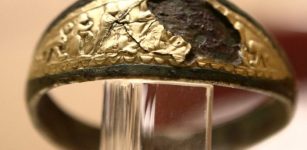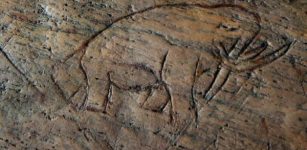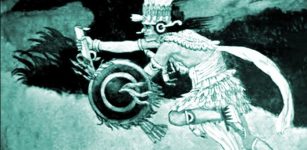Rare Medieval Painting Depicting Judas’ Betrayal Of Christ Saved By Reformation ‘Recycling’
AncientPages.com - A rare medieval painting depicting Judas' betrayal of Christ may have survived destruction at the hands of 16th century iconoclasts after being 'recycled' to list the Ten Commandments instead.
The brightly-painted wooden panel, with details picked out in silver and gold leaf, dates from c.1460, is all the more astonishing as it depicts the moment of Christ’s betrayal, by Judas Iscariot.
At the time of the Reformation and during the English Civil War, church paintings were destroyed in their thousands.
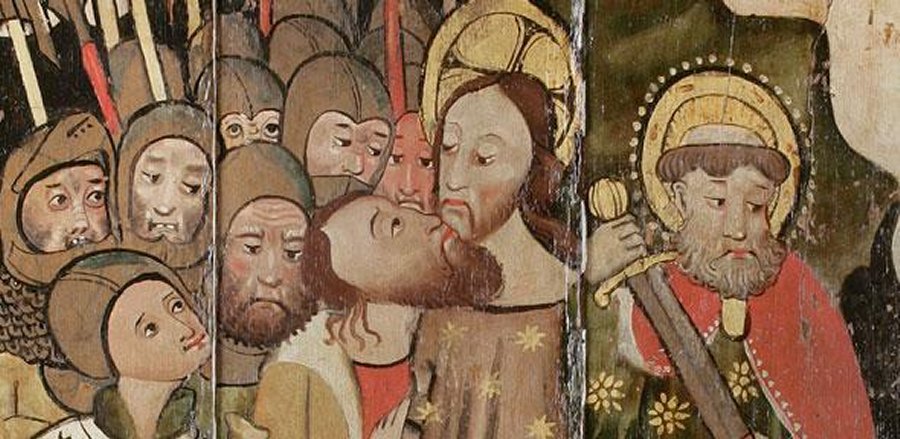
The brightly-painted wooden panel, with details picked out in silver and gold leaf, dates from c.1460, is all the more
astonishing as it depicts the moment of Christ’s betrayal, by Judas Iscariot.
The brightly-painted wooden panel, with details picked out in silver and gold leaf, dates from c.1460, is all the more astonishing as it depicts the moment of Christ’s betrayal, by Judas Iscariot.
Devout Catholic parishioners often scratched and gouged at the hated figure of Judas, so the painting would have been at risk from Catholic and Protestant congregations alike during the intervening centuries.
It is believed that up to 97 per cent of English religious art was destroyed during and after the Reformation.
The remarkable discovery of the painting’s double life was revealed when it was purchased by the Fitzwilliam Museum in 2012 from the Church of St Mary, Grafton Regis, Northamptonshire.
The church did not have the funds to conserve the work and maintain it in appropriate environmental conditions.
Conservators at the Fitzwilliam’s Hamilton Kerr Institute removed dirt, faeces and heavily discoloured varnish, then, used infra-red, ultraviolet, x-ray and pigment analysis to analyze and date the ancient painting.
"16th century lettering was revealed using infra-red photography, proving the painting had been recycled at the time of the Reformation, the offending image turned around and the back converted into a painted board probably listing the 10 commandments, typical of a Protestant church furnishing," a spokesman for the museum informed.
The painting was dated by dendrochronologist Ian Tyers.
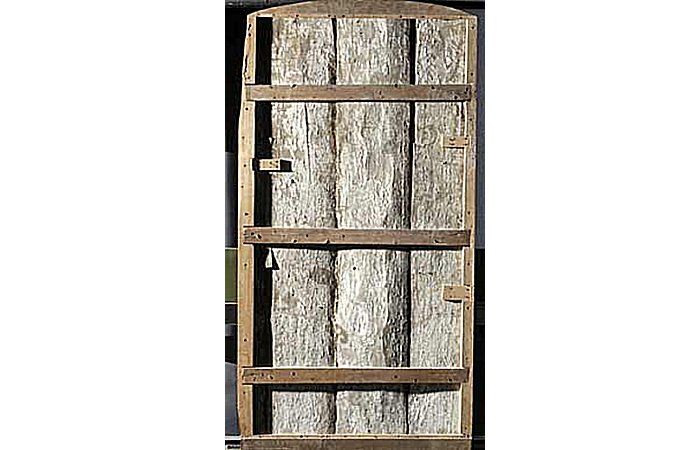
The tell-tale back of the painting
© Hamilton Kerr Institute and Fitzwilliam Museum, Cambridge. Photo: Chris Titmus
The panel is made up of boards imported to England from the eastern Baltic, Ian looked at the growth rings and identified the tree was felled after 1423 and estimated a usage date of c.1437-1469.
Dr Lucy Wrapson, conservator, said it was impossible to know for sure who had painted the lettering onto the back, but speculated it could have been down to it being "deliberately saved".
“The painting is fascinating, and conservation and cleaning has revealed the vibrant original medieval colors," she said, adding she "cannot stress how rare this is".
The painting is on display in the Rothschild Gallery of medieval works in the Fitzwilliam Museum. Funds from the sale will now help fix the roof of the Church of St Mary.
AncientPages.com
source: University of Cambridge









